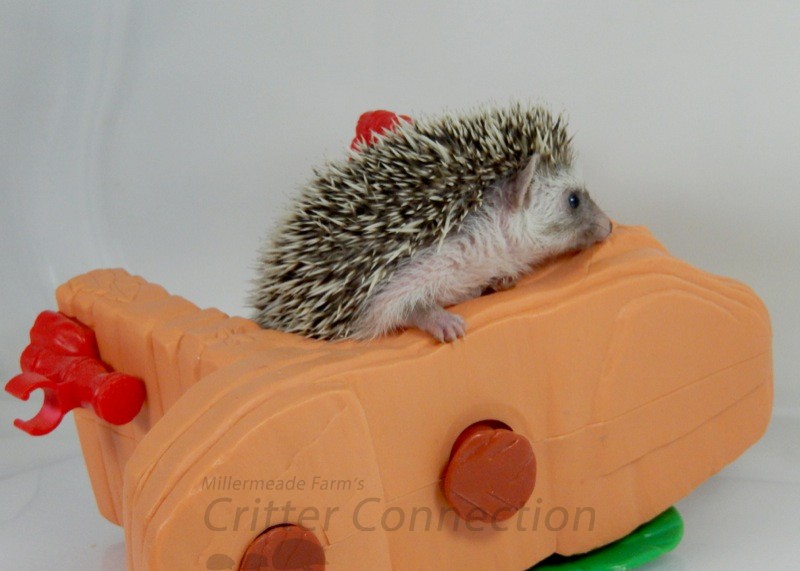Last Updated on August 25, 2022.
Climbing
- Hedgehogs will attempt to climb and are often quite adept at climbing. However, once they are up, they cannot easily climb down.
- Their body mass is not proportioned for climbing. For example, squirrels, monkeys, and other animals that climb tend to have long, narrow bodies, rather than short, round bodies like hedgehogs.
- Hedgehog limbs do not have the strength to support their round body mass when climbing, so gravity naturally works against them.
- Imagine a sumo wrestler mountain climbing. His weight would be out of proportion, making his climb both difficult and potentially dangerous.
- Hedgehogs have four feet instead of hands and feet like other animals that climb. Hedgehogs simply don’t have the strength in their front feet to grasp and hold on, as do animals with hands.
Agility and Grace
- Animals considered agile move quickly and lightly. Again, the shape of the hedgehog’s body keeps it from climbing with the agility that it needs to be safe.
- Hedgehogs, therefore, cannot be considered light-footed; rather, their attempts to climb are awkward and clumsy.
- While hedgehogs have the ability to climb, they do not have the ability to jump from one level or point to another.
- Hedgehogs will not see a spot in the distance and attempt to jump, since they lack the ability to jump. They might simply walk off of your hands, a table, or a bed, but they will not “jump” off.
- Ladders, branches, and perches in hedgehog cages are dangerous for these ground-dwelling creatures, due to their lack of agility and grace.
The Descent
- As described earlier, hedgehog paws are designed for walking, similar to our feet, and are not built for grasping or holding on to things like our hands can. Therefore, hedgehogs do not climb down. Instead, they simply fall from any elevated surface they have climbed to.
- Hedgehogs have little depth perception, so they can walk off of heights.
- Hedgehogs will typically roll into a ball when falling from any height.
- Their spines absorb much of the shock from the fall, and using the tuck-and-roll technique, most hedgehogs will escape a fall without injury.
Preventing Injury and Escape
- Hedgehogs do get hurt. While kids frequently jump off of swings without any problems, it only takes one wrong move to break an arm or worse. Hedgehogs may fall a number of times without doing damage, but it takes only a second for an injury to occur.
- If they fall too far, their spines can injure them internally.
- Hedgehogs that climb bars of their cages may get a foot or a leg stuck in the wires of the cage. This can cause serious injury including broken bones.
- To prevent climbing injuries, breeders suggest a deep plastic pan or other type of cage bottom that will keep the hedgehog from attempting to climb.
- Hedgehogs will often use cage accessories to boost themselves up the side of the cage, so you may need to move accessories toward the center of the cage.
- Lexan, plexiglass, heavy vinyl (from a fabric store), or Coroplast can be cut to line the insides of wire cages, should your hedgehog decide to take up climbing on a regular basis.
- Cardboard can be cut to fit along the insides of a cage in an emergency or as a temporary solution to prevent climbing.
- Breeders also suggest a cage with a secure lid and a side-door lock to prevent escape.
- Even large plastic tubs are not escape-proof. Low ventilation holes or interior cage attachments, such as a water bottle or the accessories described above, can give your hedgehog just enough of a boost to climb up and out of the tub.
Primary Author: Gail Smith, Millermeade Farm’s Critter Connection
Contributor: Melissa Ramos
VIDEO.: CLIMBING AND PREVENTION
VIDEO.: WHAT TO DO IF YOUR HEDGEHOG FALLS






